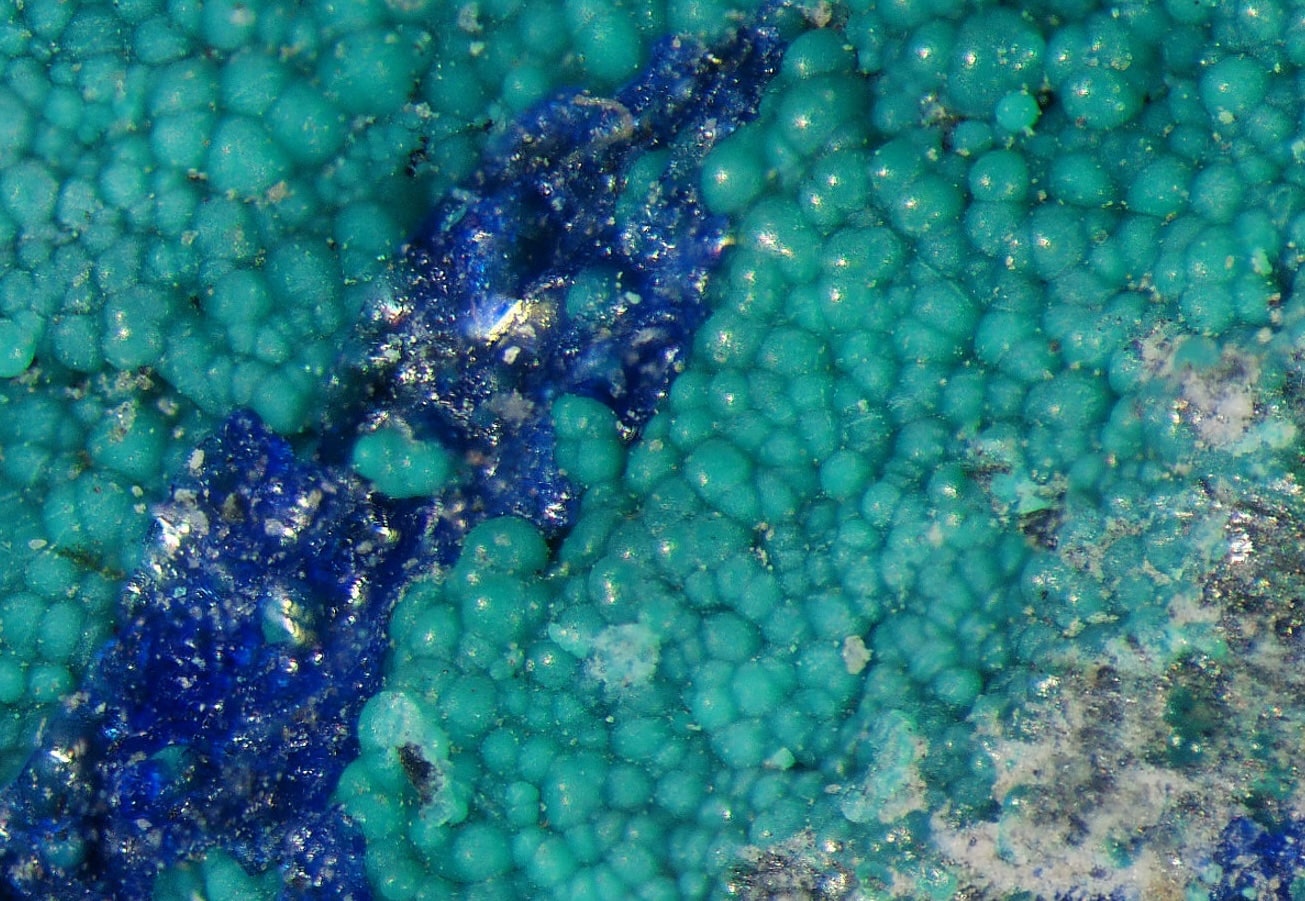
What is chalconatronite? Chalconatronite is a rare mineral with a striking blue-green color. Found primarily in arid regions, it forms in the oxidation zones of copper deposits. This mineral is composed of copper, sodium, carbonate, and water. Its unique hue and composition make it a subject of interest for geologists and mineral collectors alike. Chalconatronite often appears as crusts or efflorescences on other minerals, adding to its allure. Despite its rarity, it plays a crucial role in understanding the geochemical processes in arid environments. Ready to dive into more intriguing facts about this captivating mineral? Let's get started!
Key Takeaways:
- Chalconatronite is a rare, blue-green mineral found in deserts, valued by collectors and scientists for its unique appearance and formation process.
- Its softness, fluorescence under UV light, and formation in arid environments make chalconatronite a fascinating subject for geology enthusiasts and researchers.
What is Chalconatronite?
Chalconatronite is a rare mineral that has intrigued scientists and collectors alike. Its unique properties and formation make it a subject of fascination. Let's dive into some intriguing facts about this mineral.
-
Chalconatronite is a copper carbonate mineral with the chemical formula Na2Cu(CO3)2·3H2O.
-
The mineral was first discovered in 1873 in Chile, specifically in the Atacama Desert.
-
Chalconatronite typically forms in arid, desert environments where copper minerals are present.
-
Its name is derived from the Greek words "chalkos" meaning copper and "natron" referring to sodium carbonate.
Physical Characteristics of Chalconatronite
Understanding the physical properties of chalconatronite can help in identifying and studying this mineral.
-
Chalconatronite usually appears as blue or blue-green crystals, often forming thin, crust-like layers.
-
The mineral has a vitreous to dull luster, depending on its formation and environment.
-
It has a Mohs hardness of 2.5, making it relatively soft and easy to scratch.
-
Chalconatronite is translucent to transparent, allowing light to pass through its structure.
Formation and Occurrence
The conditions under which chalconatronite forms are quite specific, contributing to its rarity.
-
Chalconatronite forms in the oxidation zones of copper deposits, where it can be found alongside other secondary copper minerals.
-
The mineral often forms as a result of the reaction between copper-bearing solutions and sodium carbonate-rich environments.
-
It is typically found in arid regions, such as deserts, where evaporation rates are high.
-
Chalconatronite has been discovered in various locations worldwide, including Chile, the United States, and Australia.
Uses and Applications
While chalconatronite is not widely used in industrial applications, it has some interesting uses.
-
Chalconatronite is primarily of interest to mineral collectors due to its rarity and unique appearance.
-
The mineral can be used in scientific research to study the geochemical processes in arid environments.
-
Chalconatronite's distinctive color and crystal structure make it a valuable specimen for educational purposes in geology and mineralogy.
Preservation and Care
Given its softness and rarity, proper care is essential for preserving chalconatronite specimens.
-
Chalconatronite should be stored in a dry environment to prevent degradation from moisture.
-
Handling the mineral with care is crucial, as its softness makes it prone to scratches and damage.
-
Displaying chalconatronite in a controlled environment, such as a glass case, can help protect it from physical harm and environmental factors.
Fun Facts
Let's wrap up with some fun and lesser-known facts about chalconatronite.
-
Chalconatronite can sometimes fluoresce under ultraviolet light, adding to its visual appeal.
-
The mineral's unique formation process and striking appearance have made it a subject of study in various scientific publications.
The Final Word on Chalconatronite
Chalconatronite, a rare copper mineral, holds a unique place in the world of geology. Found in arid regions, it forms under specific conditions involving copper and sodium carbonate. Its striking blue-green color makes it a standout among minerals. While not commonly encountered, its presence can reveal much about the geological history of an area.
This mineral's rarity and formation process make it a subject of interest for geologists and collectors alike. Understanding chalconatronite can provide insights into the environmental conditions of ancient landscapes. So, next time you come across a vibrant blue-green mineral, you might just be looking at a piece of Earth's hidden history.
Whether you're a seasoned geologist or just a curious mind, chalconatronite offers a fascinating glimpse into the natural processes that shape our planet. Keep exploring, and who knows what other hidden gems you'll uncover.
Frequently Asked Questions
Was this page helpful?
Our commitment to delivering trustworthy and engaging content is at the heart of what we do. Each fact on our site is contributed by real users like you, bringing a wealth of diverse insights and information. To ensure the highest standards of accuracy and reliability, our dedicated editors meticulously review each submission. This process guarantees that the facts we share are not only fascinating but also credible. Trust in our commitment to quality and authenticity as you explore and learn with us.
